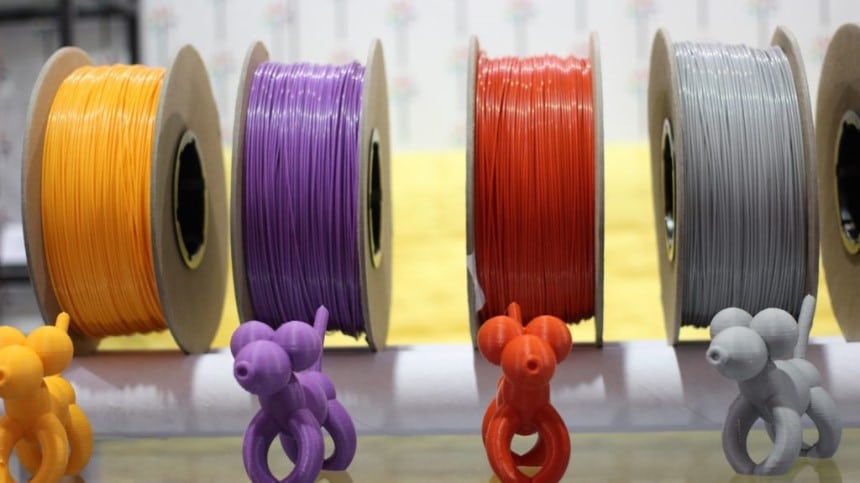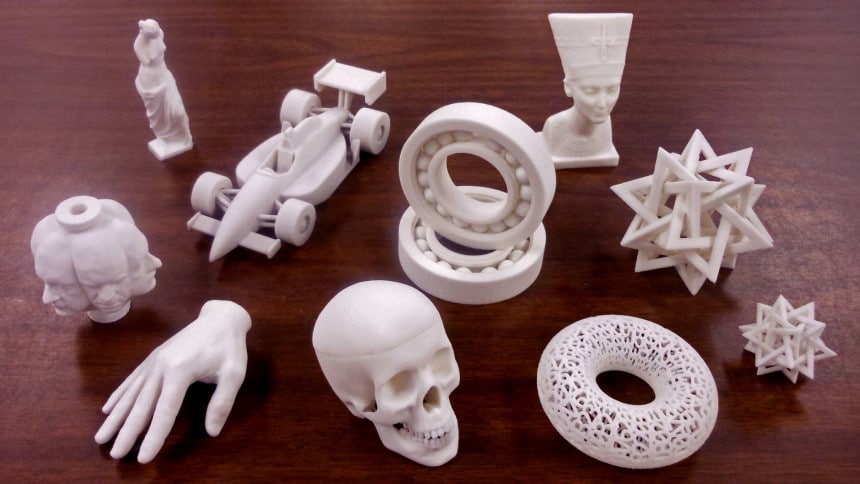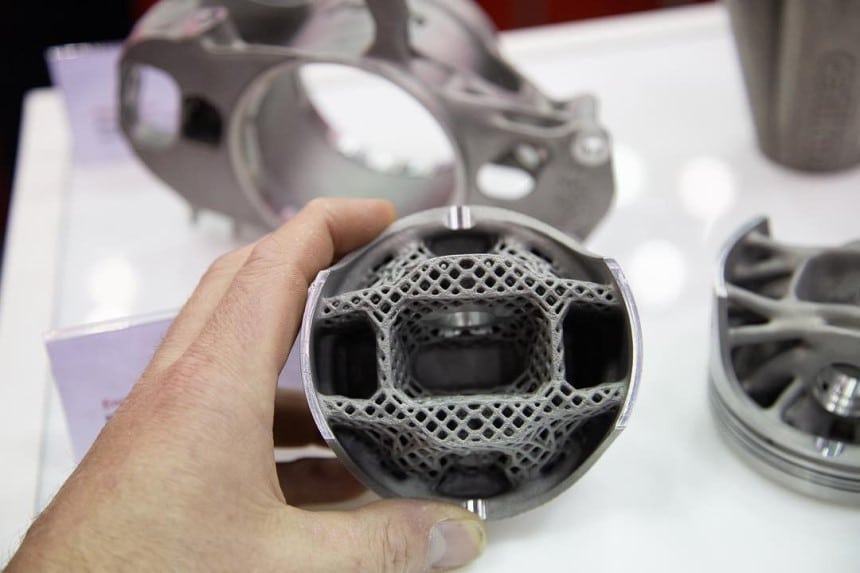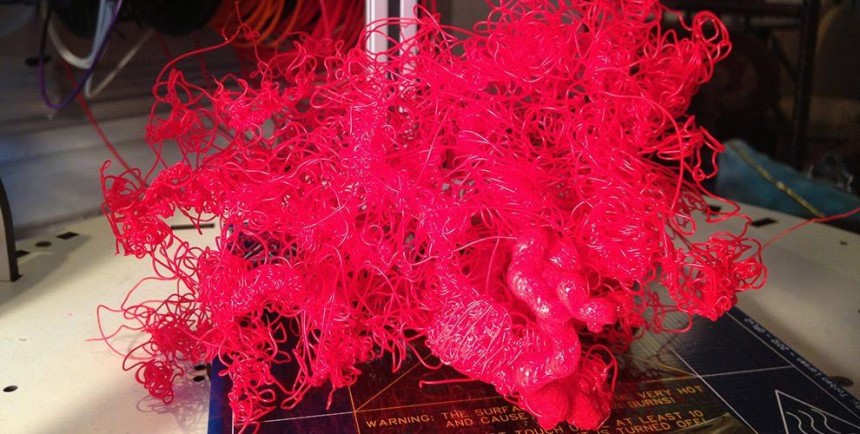

How much filament Trusted Source 3D printing filament - Wikipedia 3D printing filament is the thermoplastic feedstock for fused deposition modeling 3D printers. There are many types of filament available with different properties, requiring different temperatures to print. Filament is commonly available in the two standard diameters of 1.75 mm and 2.85 mm. 2.85 mm filament is sometimes erronously referred to as “3 mm”, but should not be confused with the less common filament size that actually measures 3 mm in diameter. en.wikipedia.org is used in 3D Printing? If you are thinking about picking up 3D Printing, then the amount of filament that you use is an important consideration.
Without the filament, there is no way that you can print your models successfully. Apart from filament being essential to whatever you want to do, knowing the amount of filament you will need will help you budget for your projects. If you are a freelancer, you certainly don’t want to spend more than you earn on a project. When you know the amount of filament required, it will be easier for you to estimate the correct budget. And also here we have collected interesting models of the best 3D printers under 500$ for you.
In this post, we will consider how you can know how much filament you need for your printing.

Thus, just looking at the STL file of your proposed project will not help you know the amount you require. Since you cannot gauge the estimate from the CAD or STL file, then what can you do?
A hack is to look at your print settings.
With the right knowledge of print settings, you will find it easier to get a good estimate of what you’ll require.
The printer settings will consume a specific amount of filament. If the settings are at a hundred percent, then there is a set volume of material that will be used. If you are running your printer settings at 80%, you should not expect to use the same volume of material at 30% or something else.
Therefore, knowing the volume of material used at 100% printer settings can help you to gauge how much you will use at other settings.
The printer settings are just one way of getting an accurate estimate. Is there another method? Yes, there is.
Apart from using your printer settings to know the volume of material that you will use, another very effective way of getting the right amount of filament needed is by loading the 3D model into a slicer.
When using this method, there are certain things that you should keep in mind. One of the most important things that you must do when using this method is to set the settings to the optimum settings for the material being used.
If you have one of the latest slicers, it should be pretty straightforward as these devices will calculate the amount of material used for the project. Some are so advanced that they will even show you the cost of the filament you will need to buy.
Armed with this information, and the density of the material, then you can get the precise amount required.
If you purchased one kilogram of filament, then you might be interested in knowing how long it will last you and how much it can print for you. A straightforward answer is that 1 kg of filament will print 1 kg of plastic.
However, there is more to it than this simplified answer. The length of time that it will last depends on several factors. These include:
Most printers on the market use a 1kg spool of filament for about a month before the spool needs to be replaced.
3D printers for ABS are also great at helping you to conserve the amount of filament used.
Epson is a relatively popular brand in the world of 3d printing and the EcoTank ET-2750 is one of the best models from the brand.
The answer to this depends on what you want to use the spool for. If you have plenty of things to print, and these are large, have big infill percentages, and have large layers, then the 1kg spool of filament will likely not last you for a long time.
Some people say that their printer uses 1kg for just a few days, while others say that it takes a couple of months to exhaust the spool.
For example, if you are creating props and similar objects, even a 9kg spool of filament might be required – so think of how quickly such a project would burn through 1kg of filament.
If you have a big nozzle and a big print, you could even use 1kg of filament in a day.
With the above information in mind, you are likely thinking about how to reduce the amount of material that you use for printing. There are some tips that can assist you in this regard. These tips will help you to get the most from the material.
Here are the tips:

Some of the prints you make can be reduced. On the other hand, some have a definite size – and you might have to stick to the dimensions.
Before you start printing, consider whether the print needs to be big as you envision or if you could make it smaller.
It will save costs and filament. You can also save costs by getting the best affordable 3d printers.
Reviews have pointed to the FlashForge 3d printer as one of the best and affordable options to buy.
Your settings definitely affect the amount of filament used in printing. Therefore, using the wrong settings for a filament might make your printer use up more filament than is necessary. If you use the wrong settings, there will be errors in your print- and you will use more filaments to correct the mistakes that have been made.
Therefore, ensure that the settings are optimal before you begin your printing.
To that end, set the slicer software to settings that will give the best prints.
Different filaments require different settings, so you must be sure that the settings on the printer are exactly what the filament requires. Some of the most important settings that you must look out for include the speed and temperature settings. Doing the right thing by using the correct settings saves you from making unnecessary errors and will help you to save material.
The best 3d printer controllers will help you get the right settings.

What if you don’t know whether to create a hollow model? Well, in that case, you can do a 3d scan of the proposed project. The scan will show you how the finished print would look like. With this information, you can tweak the settings and design to achieve a hollow 3d model that saves you from spending a lot on filament.
One of the concerns that people have when thinking about doing this how the whole process would affect the stability of the print. Well, this is a valid concern. However, when you use carbon fiber printing to supplement the print, it will be stronger and more stable.
Apart from making the object stronger, carbon fiber also works to improve the overall adhesion of the print.
If you don’t want to use a lot of filament, then why don’t you simply not use filaments for all the parts? This is a simple way to reduce the amount of filament you use.
While some parts might be created via 3d printing, you could have other parts that are made with something else. By including other manufacturing processes, you can reduce the amount of filament that you use.
Here are some of the frequently asked questions from our readers.
The length of time a 3d filament lasts depends on what you are printing, the settings you use, and the type of filament you are using. Most experts say that one roll of filament can last you for more than 100 hours.
Therefore, if you are printing for, say, 8 hours daily, the roll of filament will be used up in about two and a half weeks. This duration might vary depending on your printing process and settings.
Here are some of the proven ways of preserving your filament and stopping it from drying out:

Many readers ask, ‘how much filament is used in 3d printing?’ Well, this post has provided good answers to this question. There is no definitive answer to how much filament is used because there are several external factors that determine the amount used. These include the type of settings, the type of prints you are making, and the type of 3d printer.
Apart from showing what determines the amount of filament used, we have also considered some tips that will certainly help you to reduce the amount of filament used. We hope that this article helps you out as your print. Happy printing!